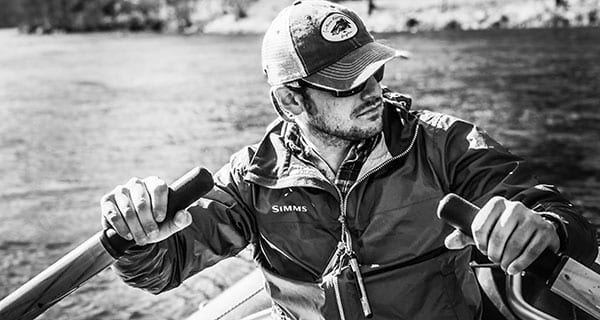Like many things in fishing; sometimes the tiniest details can make a huge difference in whether your day on the water is successful or not. I always tell my clients that when they’re fishing, they need to put as many cards in their hand as possible, and this couldn’t be more true than when using nymph rigs while fly fishing. Whether you’re using suspension rigs with indicators or contact nymphing, the biggest limiting factor can come down to where/ how much weight you place within your system.
Most people, by now, are familiar with the standard nymph rig setup: two nymphs, split shot, and an indicator. However, since this system of fly fishing is solely subsurface, it is difficult to imagine what happens once your flies hit the water and begin to sink through the water column. The size, weight, and density of your leader/ flies/ shot can all make or break what happens to your nymphing system, but most anglers never take any of these factors into account. If I had to pick two of the biggest mistakes I see people making, it would be where they place their weight, and also how much weight they add.
Weight can be added to a nymph rig either by using the weight of the fly itself and/or by adding split shot when necessary. As far as weight placement is concerned, the heaviest fly needs to be at the “point” or end of your system. In the contact nymphing world, this is referred to as the anchor fly. You can also use a drop shot rig, where split shot is added below the flies, using a length of tippet tied off a dropper tag or off the bend of the hook of the last fly in the system. Having all of your weight at the end of your nymph rig allows for the rig to cast smoothly, and also eliminates your number one enemy when nymphing: slack. This is especially important when fishing with indicators. If your split shot is placed between your flies and your indicator: a bow of slack develops that doesn’t allow for your line to become tight. This sometimes can lead to fish striking your flies at a certain depth, and your indicator won’t even so much as twitch on the water’s surface. Having your heaviest flies/ split shot at the tail end of your system allows everything to fall straight, almost like a pendulum, so that there is a much tighter connection from fly to indicator. The tighter the connection can be, the more strikes the indicator will pick up.
For me personally, I try to use as little weight as possible with my nymph rigs. (In my opinion, if you have to add 3-4 pieces of split shot to hit the bottom, then you’re better off using a spinning rod). How much weight I add to the system depends on the current depth, speed, and the ability to maintain line control/ management during the drift. In all honesty, most nymph anglers can decrease the weight needed for their rigs by simply turning their bodies slightly more upstream, so that the flies actually have time to sink to where the fish are. When you cast perpendicular to a current lane, your flies immediately come under tension and start to swing downstream of your indicator or sighter, making the presentation look that much more unnatural. Most anglers compensate for this by adding more weight either in the form of a fly or split shot. However, sometimes breaking down your casting angle and presentation can make much more of a difference than just adding more weight alone will. It should also be noted here that real nymphs (depending on their size and density) don’t plummet to the bottom immediately. Rather, they all fall at a certain rate naturally, and the trout key in on that fall rate more so than people realize.
As stated, it’s the tiny details that can sometimes lead to success or total frustration when fishing, especially when using nymphs. Paying attention to the details and experimenting with different presentations and weight distributions can ultimately pay off big time in the long run. If you carefully study these details when you’re on the water, I can promise it will pay off in dividends.
Ethan Hollifield is a member of a conservation organization called 2% For Conservation and a guide for Southern Appalachian Anglers
